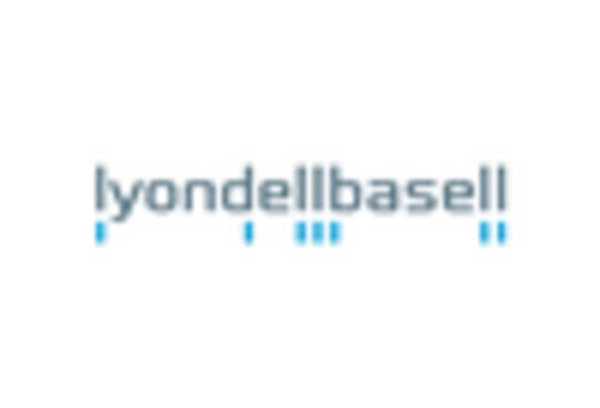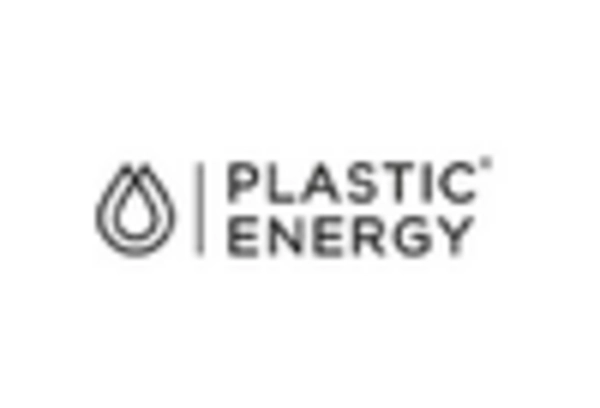Collaboration Across Industries
Collaboration across various industries is emerging as a vital driver for the Chemical Recycling Plastic Market. Partnerships between plastic manufacturers, waste management companies, and technology providers are fostering the development of integrated recycling solutions. These collaborations enable the sharing of knowledge, resources, and technologies, which can lead to more efficient recycling processes and better end-product quality. For instance, joint ventures are being established to create closed-loop systems that facilitate the continuous recycling of plastics. This trend not only enhances operational efficiencies but also strengthens the overall value chain within the Chemical Recycling Plastic Market, positioning it for sustainable growth.
Regulatory Frameworks and Policies
The Chemical Recycling Plastic Market is significantly influenced by evolving regulatory frameworks aimed at reducing plastic waste and promoting recycling. Governments are increasingly implementing stringent regulations that mandate recycling targets and incentivize the use of recycled materials. For instance, some regions have set ambitious goals to achieve 50% recycling rates by 2030. These policies not only encourage investment in chemical recycling technologies but also create a favorable environment for businesses to adopt sustainable practices. As compliance becomes essential, companies within the Chemical Recycling Plastic Market are likely to prioritize investments in innovative recycling solutions to meet regulatory requirements and enhance their market competitiveness.
Rising Consumer Awareness and Demand
Consumer awareness regarding environmental issues is on the rise, significantly impacting the Chemical Recycling Plastic Market. As individuals become more conscious of the ecological footprint of plastic waste, there is a growing demand for products made from recycled materials. This shift in consumer behavior is prompting manufacturers to seek sustainable alternatives, thereby driving the need for chemical recycling solutions. Market data indicates that products incorporating recycled plastics are expected to see a growth rate of approximately 15% annually over the next five years. This trend not only reflects changing consumer preferences but also underscores the potential for the Chemical Recycling Plastic Market to expand in response to heightened demand for sustainable products.
Investment in Research and Development
Investment in research and development is a critical driver for the Chemical Recycling Plastic Market. Companies are increasingly allocating resources to explore new chemical recycling methods and improve existing technologies. This focus on R&D is essential for overcoming current limitations in recycling efficiency and product quality. As a result, innovative solutions are emerging that can process a wider variety of plastics, including those that are traditionally difficult to recycle. Market analysts suggest that the R&D expenditure in this sector could reach several billion dollars in the coming years, indicating a robust commitment to advancing the capabilities of the Chemical Recycling Plastic Market.
Technological Innovations in Chemical Recycling
The Chemical Recycling Plastic Market is experiencing a surge in technological innovations that enhance the efficiency and effectiveness of recycling processes. Advanced methods such as pyrolysis and depolymerization are being developed, allowing for the conversion of plastic waste back into its original monomers or other valuable chemicals. This not only reduces the volume of waste but also creates high-quality raw materials for new plastic production. According to recent estimates, the adoption of these technologies could potentially increase recycling rates by up to 30% in the next five years. As these innovations continue to evolve, they are likely to play a pivotal role in shaping the future landscape of the Chemical Recycling Plastic Market.


















Leave a Comment